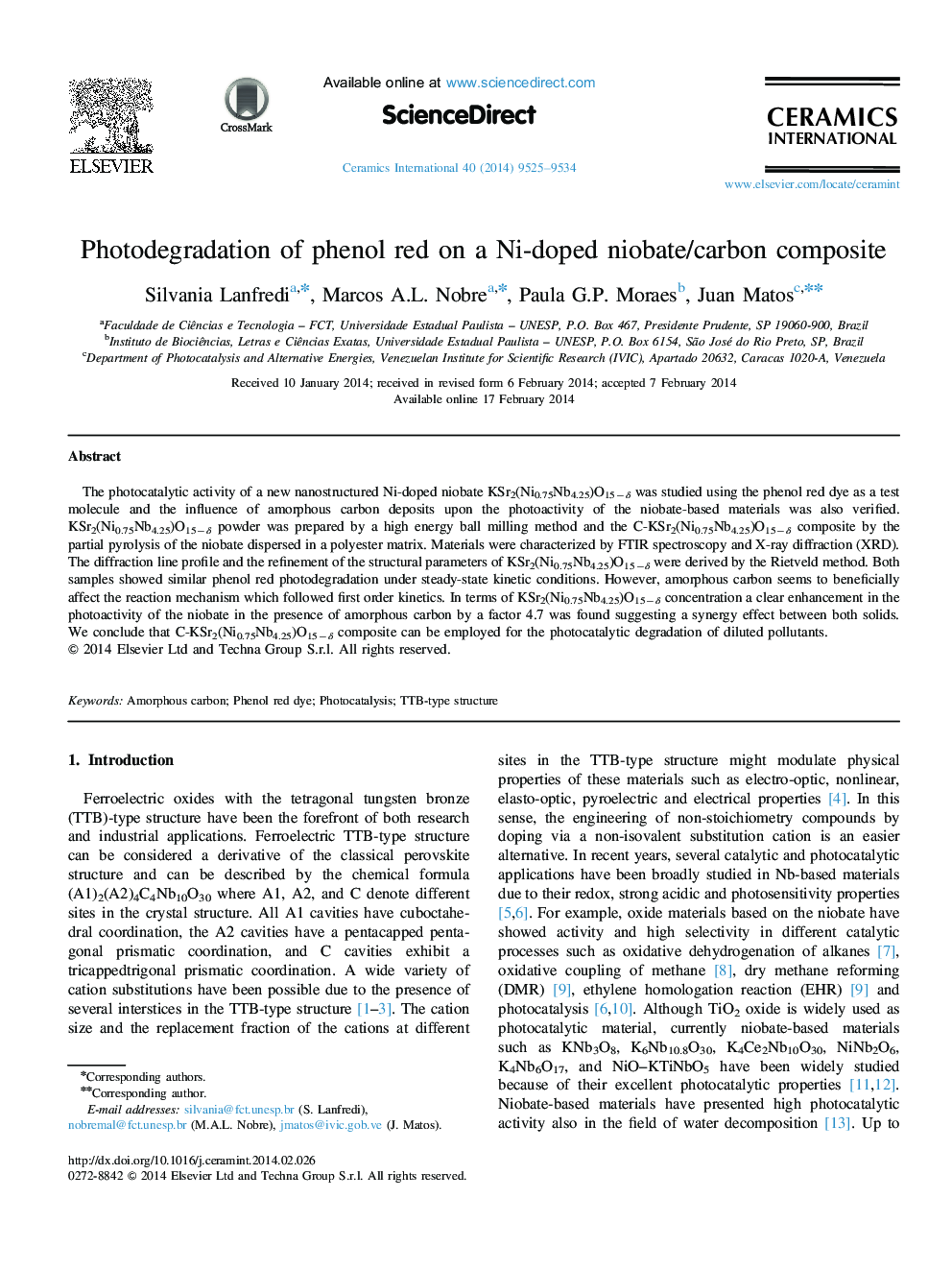| Article ID | Journal | Published Year | Pages | File Type |
|---|---|---|---|---|
| 10625197 | Ceramics International | 2014 | 10 Pages |
Abstract
The photocatalytic activity of a new nanostructured Ni-doped niobate KSr2(Ni0.75Nb4.25)O15âδ was studied using the phenol red dye as a test molecule and the influence of amorphous carbon deposits upon the photoactivity of the niobate-based materials was also verified. KSr2(Ni0.75Nb4.25)O15âδ powder was prepared by a high energy ball milling method and the C-KSr2(Ni0.75Nb4.25)O15âδ composite by the partial pyrolysis of the niobate dispersed in a polyester matrix. Materials were characterized by FTIR spectroscopy and X-ray diffraction (XRD). The diffraction line profile and the refinement of the structural parameters of KSr2(Ni0.75Nb4.25)O15âδ were derived by the Rietveld method. Both samples showed similar phenol red photodegradation under steady-state kinetic conditions. However, amorphous carbon seems to beneficially affect the reaction mechanism which followed first order kinetics. In terms of KSr2(Ni0.75Nb4.25)O15âδ concentration a clear enhancement in the photoactivity of the niobate in the presence of amorphous carbon by a factor 4.7 was found suggesting a synergy effect between both solids. We conclude that C-KSr2(Ni0.75Nb4.25)O15âδ composite can be employed for the photocatalytic degradation of diluted pollutants.
Keywords
Related Topics
Physical Sciences and Engineering
Materials Science
Ceramics and Composites
Authors
Silvania Lanfredi, Marcos A.L. Nobre, Paula G.P. Moraes, Juan Matos,
